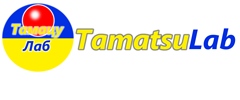

World Region Information --- Denmark Information
Denmark
We are researching the regional information of Denmark. Denmark is a constitutional monarchy in Northern Europe. We will feature information that seems good to know when entering Denmark.


World Region Information --- Denmark Information
We are researching the regional information of Denmark. Denmark is a constitutional monarchy in Northern Europe. We will feature information that seems good to know when entering Denmark.
Denmark's main territory consists of the Jutland peninsula and a number of islands. Many of the larger islands around Jutland are connected by bridges. Greenland and the Faroe Islands are also included in the Kingdom of Denmark.
Approx. 42,000 km2
Aarhus(260,000), Odense(180,000), Aalborg(110,000), etc.
about 5.82 million
From Denmark 86.7%, immigrants 10.2%, descendants of immigrants 3.1%
Danish is the de facto official language. Faroese and Greenlandic are the official languages of the Faroe Islands and Greenland respectively. Other German, English, etc.
Danish State Church 75%, Muslim 5.3%
It has deep historical and cultural ties with Sweden and Norway. It is said that there is a progressive culture that quickly incorporates new values even within the Christian cultural sphere.
- Tivoli Gardens
- Nyhavn
- National Museum of Denmark
- National Gallery of Denmark
- Christiansborg Palace
- Frederiksberg Palace
- Open Air Museum
- Kronborg Slot
- Egeskov Slot
There are mainly nine years of compulsory education, three years of higher education, and university education. Compulsory education is known for its diverse options. Also, all university education in Denmark is free.
- University of Copenhagen
- Technical University of Denmark
- Aarhus University
1814 ceded Norway to Sweden
1849 becomes a constitutional monarchy, bicameral
1914-18 remained neutral in World War I
1939-45 Second World War
1939 10-year non-aggression pact signed with Nazi Germany
1940 Invasion of Nazi Germany, conditional surrender
1943 Consolidation of control by Nazi Germany
1945 Germany surrenders, Iceland becomes independent
1949 Join NATO
1952 Become a founding member of the Nordic Council
1953 become unicameral
1959 Joined the European Free Trade Association
1973 Joined the European Economic Community (EEC)
2000 Refused to adopt the euro as its national currency
It is a sovereign state with a constitutional monarchy that has introduced a parliamentary system. The legislative body, Parliament, is unicameral. The Executive Branch is exercised by the Prime Minister and Cabinet on behalf of the monarch. There are courts that handle civil and criminal matters, and administrative courts that handle administrative litigation.
- Amalienborg Palace
- Folketinget Christiansborg(The Danish Parliament)
- The Supreme Court of Denmark
$63,829 (2018)
It is an advanced high-income economy and is known as one of the free and competitive countries.
Ukraine, Finland, Sweden, United Kingdom, Denmark, Ireland, Netherlands, Switzerland, Norway, Germany, Austria, France, Belgium, Italy, Spain, Slovenia, Portugal, Czech, Hungary, Estonia, Poland, Slovakia, Latvia, Greece, Romania, Croatia, Lithuania, Bulgaria, Russia, Iceland, Belarus, Moldova, Northern Macedonia, Albania, Luxembourg, Bosnia and Herzegovina, Cyprus, Serbia, Montenegro, Andorra, Kosovo, San Marino, Vatican, Malta, Liechtenstein, Monaco